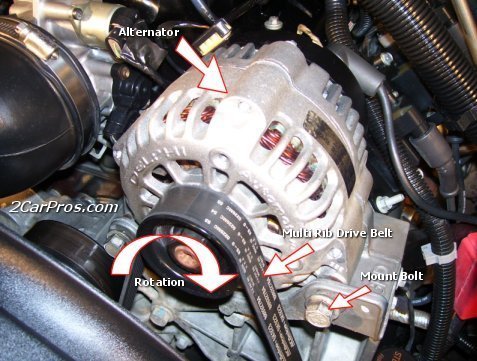The voltage regulator is built into the Engine Computer. Failures do occur, but they're very uncommon. This entire system can be diagnosed with three voltage measurements. Start by measuring the battery's voltage with the engine running. It must be between 13.75 and 14.75 volts. If you find that, the charging system is working and we have to look for a drain on the battery or some other problem.
If the battery voltage stays at around 12.6 or less with the engine running, double-check that voltage at the large output terminal on the back of the alternator. The voltage there must always be the same as the battery voltage. If it is significantly different, there is a fuse link wire burned open. That will be spliced into that fat wire and will be close to the battery's positive terminal.
Next, measure the voltage on the two smaller terminals on the back of the alternator. This has to be done with the engine running. One of them is going to have full battery voltage, ... The same as you measured in the last step. The secret is what you find on the other terminal. You should find it is between roughly 4 - 11 volts. The lower that voltage is, the greater the difference is between the two terminals, and the stronger electromagnetic field is being developed. That results in higher output voltage and current.
If you find exactly the same voltage on both small terminals, there is a break in the circuit after that point. That includes the wire going to the voltage regulator, any connector terminals, and the regulator itself. We can do a little more testing to verify the alternator is okay.
If you find 0 volts on the second terminal, the internal brushes are open. 0 volts can also be caused by the wire going to the regulator is grounded, but then the alternator would be charging wide open and over-charging the battery. One common mistake when rebuilding some alternators is a thin wire or toothpick is needed to hold the brushes retracted until the assembly is installed over the slip rings, then that toothpick is pulled out to allow the spring-loaded brushes to drop into place. Sometimes people forget to pull out that toothpick.
Let me know what you find with those voltages, then we'll figure out where to go next.
Image (Click to make bigger)
Friday, September 27th, 2019 AT 2:03 PM




